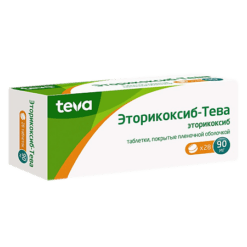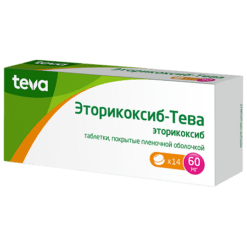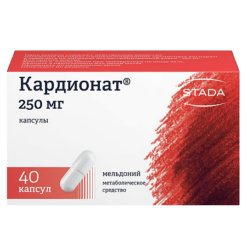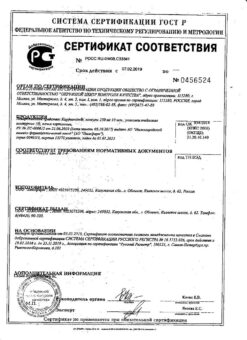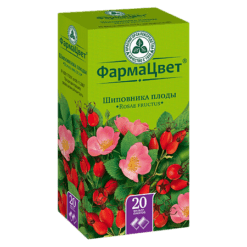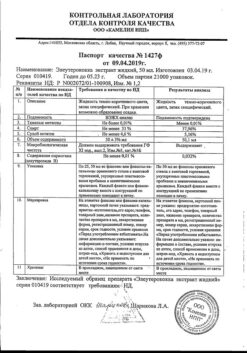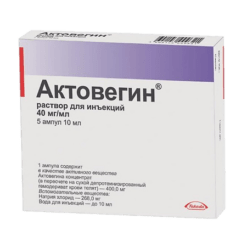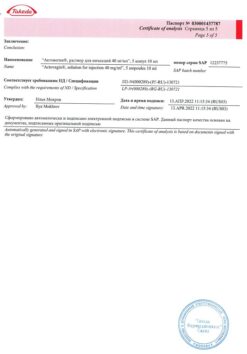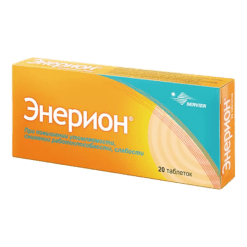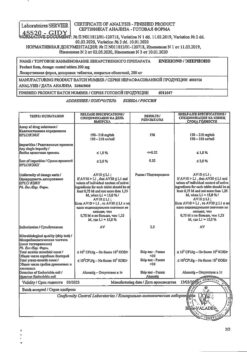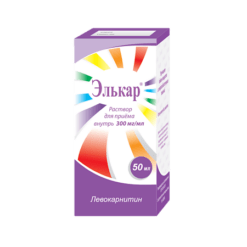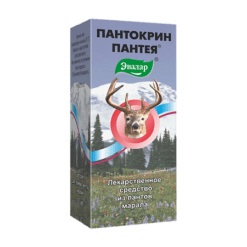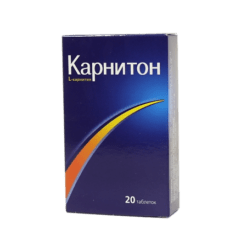No products in the cart.
Etoricoxib-Teva, 90 mg 7 pcs
€12.96 €10.80
Description
Фармакотерапевтическая группа: нестероидные противовоспалительные препараты (НПВП).
Код АТХ: М01АН05
Фармакологические свойства
Фармакодинамика
Эторикоксиб при пероральном приеме в терапевтических концентрациях является селективным ингибитором циклооксигеназы-2 (ЦОГ-2). В клинических фармакологических исследованиях эторикоксиб дозозависимо ингибировал ЦОГ-2, не оказывая влияния на ЦОГ-1 при применении суточной дозы до 150 мг. Препарат не ингибирует синтез простагландинов в слизистой оболочке желудка и не влияет на функцию тромбоцитов.
Циклооксигеназа отвечает за образование простагландинов. Выделены две изоформы циклооксигеназы – ЦОГ-1 и ЦОГ-2. ЦОГ-2 представляет собой изофермент, который индуцируется под действием различных противовоспалительных медиаторов и рассматривается как основной фермент, отвечающий за синтез простаноидных медиаторов боли, воспаления и лихорадки. ЦОГ-2 участвует в процессах овуляции, имплантации и закрытия артериального протока, регуляции функции почек и центральной нервной системы (индукция лихорадки, ощущения боли, когнитивная функция), а также может играть определенную роль в процессе заживлении язв. ЦОГ-2 была обнаружена в тканях, окружающих язвы желудка у человека, но ее значение для заживления язвы не установлено.
Эффективность
У пациентов с остеоартрозом (ОА) эторикоксиб при применении в дозе 60 мг один раз в день обеспечивал достоверное уменьшение боли и улучшение оценки своего состояния пациентами. Эти благоприятные эффекты наблюдались уже на второй день лечения и сохранялись в течение 52 недель. Исследования эторикоксиба при применении в дозе 30 мг один раз в день (с использованием сходных методов оценки) продемонстрировали эффективность по сравнению с плацебо в течение периода лечения продолжительностью 12 недель. В исследовании, проводимом с целью определения оптимальной дозы, эторикоксиб при применении в дозе 60 мг продемонстрировал достоверно более выраженное улучшение, чем в дозе 30 мг, для всех трех первичных конечных точек через 6 недель лечения. Доза 30 мг не изучалась при остеоартрозе суставов кистей рук.
У пациентов с ревматоидным артритом (РА) эторикоксиб при применении в дозе 90 мг один раз в день обеспечивал достоверное уменьшение боли и воспаления и улучшение подвижности. Эти благоприятные эффекты сохранялись в течение периода лечения продолжительностью 12 недель.
У пациентов с острым подагрическим артритом эторикоксиб при применении в дозе 120 мг один раз в день в течение всего периода лечения продолжительностью восемь дней уменьшал умеренную и сильную боль в суставах и воспаление. Эффективность была сравнима с эффективностью индометацина при применении его в дозе 50 мг три раза в день. Уменьшение боли отмечалось уже через четыре часа после начала лечения.
У пациентов с анкилозирующим спондилитом эторикоксиб при применении в дозе 90 мг один раз в день обеспечивал достоверное уменьшение боли в спине, воспаления, ригидности, а также улучшение функций. Клиническая эффективность эторикоксиба наблюдалась уже на второй день лечения и сохранялась в течение всего периода лечения продолжительностью 52 недели.
В клиническом исследовании по изучению боли после стоматологических операций эторикоксиб в дозе 90 мг назначали один раз в день в течение трех дней. В подгруппе пациентов с умеренной болью (при исходной оценке) эторикоксиб при применении в дозе 90 мг оказывал такой же обезболивающий эффект, как и ибупрофен в дозе 600 мг (16,11 в сравнении с 16,39; Р=0,722), и превосходил по эффективности комбинацию парацетамол/кодеин в дозе 600 мг/60 мг (11,00, Р<0,001) и плацебо (6,84, Р<0,001) согласно общей оценке уменьшения боли в течение первых 6 часов (TOPAR6). Доля пациентов, которым потребовались обезболивающие препараты быстрого действия в течение первых 24 часов после приема исследуемых препаратов, составила 40,8% при применении эторикоксиба в дозе 90 мг, 25,5% при применении ибупрофена в дозе 600 мг каждые 6 часов и 46,7% при применении комбинации парацетамол/кодеин в дозе 600 мг/60 мг каждые 6 часов по сравнению с 76,2% в группе плацебо. В этом исследовании медиана начала действия (ощутимое уменьшение боли) при применении эторикоксиба в дозе 90 мг составила 28 минут после приема препарата.
Безопасность
Программа MEDAL (Многонациональная Программа Оценки Долгосрочного Назначения Эторикоксиба и Диклофенака при Артрите)
Программа MEDAL представляла собой проспективную программу оценки безопасности на основании сердечно-сосудистых (СС) явлений по объединенным данным трех рандомизированных двойных слепых активно-контролируемых исследований: MEDAL, EDGE II и EDGE.
Исследование MEDAL представляло собой исследование, длительность которого определялась достижением конечных точек (СС явлений), включавшее 17804 пациента с ОА и 5700 пациентов с РА, получавших эторикоксиб в дозе 60 мг (ОА) или 90 мг (ОА и PA) или диклофенак в дозе 150 мг в день в среднем в течение 20,3 месяца (максимум 42,3 месяца, медиана 21,3 месяца). В этом исследовании регистрировали только серьезные нежелательные явления и случаи выбывания из исследования вследствие любых нежелательных явлений.
В исследованиях EDGE и EDGE II сравнивали желудочно-кишечную переносимость эторикоксиба и диклофенака. Исследование EDGE включало 7111 пациентов с ОА, получавших эторикоксиб в дозе 90 мг в день (в 1,5 раза больше дозы, рекомендуемой при ОА) или диклофенак в дозе 150 мг в день в среднем в течение 9,1 месяца (максимум 16,6 месяца, медиана 11,4 месяца). Исследование EDGE II включало 4086 пациентов с РА, получавших эторикоксиб в дозе 90 мг в день или диклофенак в дозе 150 мг в день в среднем в течение 19,2 месяцев (максимум 33,1 месяца, медиана 24 месяца).
В объединенной Программе MEDAL 34701 пациент с ОА или РА получали лечение в среднем в течение 17,9 месяца (максимум 42,3 месяца, медиана 16,3 месяца), около 12800 пациентов получали лечение в течение более 24 месяцев. У включенных в Программу MEDAL пациентов при исходной оценке был зарегистрирован широкий спектр СС и желудочно-кишечных факторов риска. Были исключены пациенты с недавно перенесенным инфарктом миокарда, а также с аортокоронарным шунтированием или чрескожным коронарным вмешательством в течение 6 месяцев перед включением в исследование. В исследованиях разрешалось применять гастропротекторы и низкие дозы аспирина.
Общая безопасность
Достоверных различий между эторикоксибом и диклофенаком в отношении частоты тромботических СС явлений обнаружено не было. Кардиоренальные нежелательные явления более часто наблюдались при назначении эторикоксиба, чем при назначении диклофенака; данный эффект был дозозависимым (отдельные результаты представлены ниже). Нежелательные явления со стороны желудочно-кишечного тракта (ЖКТ) и печени достоверно чаще наблюдались пpи назначении диклофенака, чем при назначении эторикоксиба. Частота нежелательных явлений в исследованиях EDGE и EDGE II, а также нежелательных явлений, признанных серьезными или потребовавших отмены лечения, в исследовании MEDAL была выше пpи назначении эторикоксиба, чем пpи назначении диклофенака.
Результаты оценки безопасности в отношении сердечно-сосудистой системы
Частота подтвержденных серьезных тромботических СС нежелательных явлений (включавших сердечные, цереброваскулярные и периферические сосудистые явления) была сопоставимой между группами, получавшими эторикоксиб или диклофенак (данные приведены в таблице ниже). По частоте тромботических явлений не было выявлено статистически значимых различий между эторикоксибом и диклофенаком во всех проанализированных подгруппах, включая категории пациентов в диапазоне исходного СС риска. Относительный риск для подтвержденных серьезных тромботических СС нежелательных явлений был сходным для эторикоксиба (при приеме в дозе 60 мг или 90 мг) и диклофенака (при приеме в дозе 150 мг).
Таблица «Частота подтвержденных тромботических СС явлений (Программа MEDAL)»
Эторикоксиб (N=16819) 25836 пациенто-лет | Диклофенак (N=16483) 24766 пациенто-лет | Сравнение между видами лечения | |||||||||
Частота1 (95% ДИ) | Частота1 (95% ДИ) | Относительный риск (95% ДИ) | |||||||||
Подтвержденные тромботические СС серьезные нежелательные явления | |||||||||||
При выполнении требований протокола | 1,24(1,11, 1,38) | 1,30(1,17, 1,45) | 0,95 (0,81, 1,11) | ||||||||
В зависимости от назначенного лечения | 1,25 (1,14, 1,36) | 1,19 (1,08, 1,30) | 1,05 (0,93, 1,19) | ||||||||
Подтвержденные сердечные явления | |||||||||||
При выполнении требований протокола | 0,71 (0,61,0,82) | 0,78 (0,68, 0,90) | 0,90 (0,74, 1,10) | ||||||||
В зависимости от назначенного лечения | 0,69 (0,61, 0,78) | 0,70 (0,62, 0,79) | 0,99 (0,84, 1,17) | ||||||||
Подтвержденные цереброваскулярные явления | |||||||||||
При выполнении требований протокола | 0,34 (0,28, 0,42) | 0,32 (0,25, 0,40) | 1,08 (0,80, 1,46) | ||||||||
В зависимости от назначенного лечения | 0,33 (0,28, 0,39) | 0,29 (0,24, 0,35) | 1,12 (0,87,1,44) | ||||||||
Подтвержденные периферические сосудистые явления | |||||||||||
При выполнении требований протокола | 0,20 (0,15, 0,27) | 0,22 (0,17, 0,29) | 0,92 (0,63,1,35) | ||||||||
В зависимости от назначенного лечения | 0,24 (0,20, 0,30) | 0,23 (0,18,0,28) | 1,08 (0,81, 1,44) | ||||||||
1 Количество явлений на 100 пациенто-лет; ДИ=доверительный интервал; N = oбщee количество пациентов, включенных в популяцию пациентов, выполнивших требования протокола. При выполнении требований протокола – все явления, развившиеся на фоне исследуемой терапии или в течение 14 дней с момента ее прекращения (исключены пациенты, которые получили <75% исследуемого препарата, и пациенты, принимавшие не включенные в исследование НПВП >10% времени). В зависимости от назначенного лечения – все подтвержденные явления, развившиеся до окончания исследования (включены пациенты, которые могли подвергаться не включенным в исследование вмешательствам после прекращения приема исследуемого препарата). Общее количество рандомизированных пациентов: n = 17412 для эторикоксиба и n = 17289 для диклофенака. | |||||||||||
СС смертность и общая смертность были сопоставимы между группами лечения эторикоксибом и диклофенаком.
Кардиоренальные явления
Приблизительно у 50% пациентов, включенных в исследование MEDAL, при исходной оценке была зарегистрирована артериальная гипертензия в анамнезе. Частота выбывания вследствие нежелательных явлений, связанных с артериальной гипертензией, была статистически значимо выше для эторикоксиба, чем для диклофенака. Частота нежелательных явлений, связанных с хронической сердечной недостаточностью (случаи выбывания из исследования и серьезные явления), была сходной для эторикоксиба в дозе 60 мг и диклофенака в дозе 150 мг, но была выше для эторикоксиба в дозе 90 мг по сравнению с диклофенаком в дозе 150 мг (и статистически значимо выше для эторикоксиба в дозе 90 мг по сравнению с диклофенаком в дозе 150 мг в группе ОА исследования MEDAL). Частота подтвержденных нежелательных явлений, связанных с хронической сердечной недостаточностью (явления, которые были серьезными и привели к госпитализации или посещению отделения неотложной помощи), была незначительно выше для эторикоксиба по сравнению с диклофенаком в дозе 150 мг; данный эффект был дозозависимым. Частота случаев выбывания из исследования вследствие нежелательных явлений, связанных с отеками, была выше для эторикоксиба по сравнению с диклофенаком в дозе 150 мг; данный эффект был дозозависимым (статистически значимо для эторикоксиба в дозе 90 мг, но не для эторикоксиба в дозе 60 мг).
Результаты оценки кардиоренальной безопасности в исследованиях EDGE и EDGE II согласуются с результатами в исследовании MEDAL
В отдельных исследованиях Программы MEDAL абсолютная частота выбывания из исследования в любой группе лечения для эторикоксиба (60 мг или 90 мг) составляла до 2,6 % в связи с артериальной гипертензией, до 1,9% в связи с отеками и до 1,1% в связи с хронической сердечной недостаточностью. У пациентов, принимавших эторикоксиб в дозе 90 мг, частота выбывания из исследования была выше, чем у пациентов, принимавших эторикоксиб в дозе 60 мг.
Результаты оценки желудочно-кишечной переносимости в Программе MEDAL
В каждом из трех исследований, входящих в Программу MEDAL, частота выбывания из исследования для любого клинического нежелательного явления со стороны ЖКТ (например, диспепсия, боль в животе, язвы) была достоверно ниже для эторикоксиба в сравнении с диклофенаком. Частота выбывания из исследования вследствие нежелательных клинических явлений со стороны ЖКТ на 100 пациенто-лет за весь период исследования была следующей: 3,23 для эторикоксиба и 4,96 для диклофенака в исследовании MEDAL; 9,12 для эторикоксиба и 12,28 для диклофенака в исследовании EDGE, и 3,71 для эторикоксиба и 4,81 для диклофенака в исследовании EDGE II.
Результаты оценки безопасности в отношении ЖКТ в Программе MEDAL
В целом нежелательные явления со стороны верхних отделов ЖКТ были определены как перфорации, язвы и кровотечения. Осложненные нежелательные явления со стороны верхних отделов ЖКТ включали перфорацию, непроходимость и осложненное кровотечение; неосложненные нежелательные явления со стороны верхних отделов ЖКТ включали неосложненные кровотечения и неосложненные язвы. Общая частота нежелательных явлений со стороны верхних отделов ЖКТ была достоверно ниже для эторикоксиба в сравнении с диклофенаком. Достоверных различий между эторикоксибом и диклофенаком по частоте осложненных явлений обнаружено не было. Для геморрагических нежелательных явлений со стороны верхних отделов ЖКТ (осложненных и неосложненных в совокупности) не было обнаружено достоверных различий между эторикоксибом и диклофенаком. Преимущество эторикоксиба в отношении верхних отделов ЖКТ по сравнению с диклофенаком у пациентов, одновременно принимающих аспирин в низких дозах (около 33% пациентов), не было статистически значимым.
Частота подтвержденных осложненных и неосложненных клинических нежелательных явлений со стороны верхних отделов ЖКТ на 100 пациенто-лет (перфорации, язвы и кровотечения) составила 0,67 (95% ДИ 0,57, 0,77) для эторикоксиба и 0,97 (95% ДИ 0,85, 1,10) для диклофенака, на основании чего относительный риск составил 0,69 (95% ДИ 0,57, 0,83).
Была изучена частота подтвержденных нежелательных явлений со стороны верхних отделов ЖКТ у пожилых пациентов; максимальное снижение частоты наблюдалось у пациентов в возрасте ≥75 лет – 1,35 (95% ДИ 0,94, 1,87) в сравнении с 2,78 (95% ДИ 2,14, 3,56) явлений на 100 пациенто-лет для эторикоксиба и диклофенака, соответственно.
Частота подтвержденных нежелательных явлений со стороны нижних отделов ЖКТ (перфорация тонкого или толстого кишечника, непроходимость или кровотечение) достоверно не различалась между группами, получавшими эторикоксиб и диклофенак.
Результаты оценки безопасности в отношении печени в Программе MEDAL.
Эторикоксиб характеризовался статистически достоверно более низкой частотой выбывания из исследования вследствие нежелательных явлений со стороны печени по сравнению с диклофенаком. В объединенной Программе MEDAL 0,3% пациентов, получавших эторикоксиб, и 2,7% пациентов, получавших диклофенак, выбыли из исследования вследствие нежелательных явлений со стороны печени. Частота нежелательных явлений на 100 пациенто-лет составила 0,22 для эторикоксиба и 1,84 для диклофенака (р<0,001 для эторикоксиба в сравнении с диклофенаком). Большинство нежелательных явлений со стороны печени в Программе MEDAL были несерьезными.
Дополнительные данные по безопасности, связанные с тромботическими СС явлениями.
В клинических исследованиях, за исключением исследований Программы MEDAL, приблизительно 3100 пациентов получали эторикоксиб в дозе ≥60 мг в день в течение 12 недель или дольше. Не было обнаружено заметных различий в частоте подтвержденных серьезных тромботических СС явлений у пациентов, получавших эторикоксиб в дозе ≥60 мг, плацебо или НПВП, не содержащие напроксен. Однако в сравнении с пациентами, получавшими напроксен в дозе 500 мг два раза в день, частота этих явлений была выше у пациентов, получавших эторикоксиб. Разница в антиагрегантной активности между некоторыми НПВП, ингибирующими ЦОГ-1, и селективными ингибиторами ЦОГ-2 может иметь клиническое значение у пациентов из группы риска развития тромбоэмболических явлений. Селективные ингибиторы ЦОГ-2 подавляют образование системного (и, возможно, эндотелиального) простациклина, не влияя на тромбоцитарный тромбоксан. Клиническая значимость этих наблюдений не установлена.
Дополнительные данные по безопасности в отношении ЖКТ
В двух двойных слепых эндоскопических исследованиях продолжительностью 12 недель кумулятивная частота развития гастродуоденальных язв была значительно ниже у пациентов, получавших эторикоксиб в дозе 120 мг один раз в день, чем у пациентов, получавших напроксен в дозе 500 мг два раза в день или ибупрофен в дозе 800 мг три раза в день. Частота развития язв при назначении эторикоксиба была выше по сравнению с плацебо.
Исследование функции почек у пожилых
В рандомизированном двойном слепом плацебо-контролируемом исследовании в параллельных группах оценивали воздействие 15-дневной терапии эторикоксибом (90 мг), целекоксибом (200 мг два раза в день), напроксеном (500 мг два раза в день) и плацебо на выведение натрия почками, артериальное давление (АД) и другие показатели функции почек у пациентов в возрасте от 60 до 85 лет, получавших рацион с содержанием натрия 200 мэкв/сут. Эторикоксиб, целекоксиб и напроксен через 2 недели лечения оказывали сходное влияние на выведение натрия почками. Все активные препараты сравнения приводили к увеличению систолического АД относительно плацебо, однако терапия эторикоксибом приводила к статистически значимому увеличению систолического АД на 14-й день по сравнению с целекоксибом и напроксеном (среднее изменение для систолического АД по сравнению с исходным значением: эторикоксиб – 7,7 мм рт. ст., целекоксиб – 2,4 мм рт. ст., напроксен – 3,6 мм рт. ст.).
Фармакокинетика
Абсорбция. Эторикоксиб быстро всасывается при приеме внутрь. Абсолютная биодоступность при приеме внутрь составляет около 100%. При применении препарата у взрослых натощак в дозе 120 мг один раз в сутки до достижения равновесного состояния максимальная концентрация (Сmax) составляет 3,6 мкг/мл. Время достижения максимальной концентрации (TCmax) в плазме крови – 1ч после приема препарата. Средняя геометрическая AUC0-24ч – 37,8 мкг*ч/мл. Фармакокинетика эторикоксиба в пределах терапевтических доз носит линейный характер.
При приеме эторикоксиба в дозе 120 мг во время еды (еда с высоким содержанием жиров) не наблюдалось клинически значимого влияния на степень абсорбции. Скорость абсорбции изменялась, что приводило к снижению Сmax на 36% и увеличению TCmax на 2 ч.
Данные результаты не считаются клинически значимыми. В клинических исследованиях эторикоксиб применялся независимо от приема пищи.
Распределение. Эторикоксиб приблизительно на 92% связывается с белками плазмы крови у человека при концентрациях 0,05-5 мкг/мл. Объем распределения (Vdss) в равновесном состоянии составляет около 120 л.
Эторикоксиб проникает через плацентарный барьер и гематоэнцефалический барьер.
Meтаболизм. Эторикоксиб интенсивно метаболизируется. Менее 1% эторикоксиба выводится почками в неизмененном виде. Основной путь метаболизма – образование 6′-гидроксиметилэторикоксиба, катализируемое ферментами системы цитохромов. CYP3A4 способствует метаболизму эторикоксиба in vivo. Исследования in vitro указывают, что изоферменты CYP2D6, CYP2C9, CYP1A2 и CYP2C19 также могут катализировать основной путь метаболизма, но их количественное воздействие in vivo не изучалось.
У человека обнаружено 5 метаболитов эторикоксиба. Основным метаболитом является 6′-карбоксиацетилэторикоксиб, образующийся при дополнительном окислении 6′-гидроксиметилэторикоксиба. Эти основные метаболиты не обладают заметной активностью, либо являются слабыми ингибиторами ЦОГ-2. Ни один из этих метаболитов не ингибирует ЦОГ-1.
Выведение. При однократном внутривенном введении здоровым добровольцам меченого радиоактивного эторикоксиба в дозе 25 мг 70% эторикоксиба выводилось через почки, 20% – через кишечник, преимущественно в виде метаболитов. Менее 2% обнаруживалось в неизмененном виде.
Выведение эторикоксиба происходит в основном путем метаболизма с последующим выведением через почки.
Разновесная концентрация достигается при ежедневном приеме 120 мг эторикоксиба через 7 суток с коэффициентом кумуляции около 2, что соответствует периоду полувыведения около 22 ч. Плазменный клиренс после внутривенного введения 25 мг составляет приблизительно 50 мл/мин.
Особые группы пациентов
Пожилые
Фармакокинетика у пожилых (65 лет и старше) сопоставима с фармакокинетикой у молодых.
Пол
Фармакокинетика эторикоксиба сходна у мужчин и женщин.
Печеночная недостаточность
У пациентов с нарушениями функции печени легкой степени тяжести (5-6 баллов по шкале Чайлд-Пью) приём эторикоксиба в дозе 60 мг один раз в сутки сопровождался увеличением показателя AUC на 16% по сравнению со здоровыми лицами, принимавшими препарат в той же дозе.
У пациентов с нарушениями функции печени средней степени тяжести (7-9 баллов по шкале Чайлд-Пью), принимавших эторикоксиб в дозе 60 мг через день, среднее значение AUC было таким же, как у здоровых лиц, принимавших эторикоксиб ежедневно в той же дозе. Эторикоксиб в дозе 30 мг один раз в день не изучался в данной популяции.
Данные клинических и фармакокинетических исследований у пациентов с тяжелым нарушением функции печени (≥10 баллов по шкале Чайлд-Пью) отсутствуют.
Почечная недостаточность
Фармакокинетические показатели однократного применения эторикоксиба в дозе 120 мг у пациентов с нарушениями функции почек средней и тяжелой степени и с терминальной стадией хронической почечной недостаточности (ХПН), находящихся на гемодиализе, не отличались существенно от показателей у здоровых лиц. Гемодиализ незначительно влиял на выведение (клиренс диализа – около 50 мл/мин).
Дети
Фармакокинетические параметры эторикоксиба у детей до 12 лет не изучались.
В фармакокинетическом исследовании (n=16), проводившемся у подростков в возрасте от 12 до 17 лет, фармакокинетика у подростков с массой тела от 40 до 60 кг при приеме эторикоксиба в дозе 60 мг один раз в день и у подростков с массой тела более 60 кг при приеме эторикоксиба в дозе 90 мг один раз в день была аналогична фармакокинетике у взрослых при приеме эторикоксиба в дозе 90 мг один раз в день. Безопасность и эффективность эторикоксиба у детей не установлена.
Indications
Indications
Symptomatic treatment of osteoarthritis, rheumatoid arthritis, ankylosing spondylitis, pain and inflammation associated with acute gouty arthritis. Short-term treatment of moderate acute pain after dental surgery.
Pharmacological effect
Pharmacological effect
Pharmacotherapeutic group: non-steroidal anti-inflammatory drugs (NSAIDs).
ATX code: M01AN05
Pharmacological properties
Pharmacodynamics
Etoricoxib, when administered orally at therapeutic concentrations, is a selective cyclooxygenase-2 (COX-2) inhibitor. In clinical pharmacological studies, etoricoxib dose-dependently inhibited COX-2 without affecting COX-1 at daily doses of up to 150 mg. The drug does not inhibit the synthesis of prostaglandins in the gastric mucosa and does not affect platelet function.
Cyclooxygenase is responsible for the formation of prostaglandins. Two isoforms of cyclooxygenase have been isolated – COX-1 and COX-2. COX-2 is an isoenzyme that is induced by various anti-inflammatory mediators and is considered as the main enzyme responsible for the synthesis of prostanoid mediators of pain, inflammation and fever. COX-2 is involved in the processes of ovulation, implantation and closure of the ductus arteriosus, regulation of kidney and central nervous system function (induction of fever, pain sensation, cognitive function), and may also play a role in the healing process of ulcers. COX-2 has been found in tissue surrounding human gastric ulcers, but its importance in ulcer healing has not been established.
Efficiency
In patients with osteoarthritis (OA), etoricoxib, administered at a dose of 60 mg once daily, provided significant pain relief and improved patient assessment of their condition. These beneficial effects were observed as early as the second day of treatment and persisted for 52 weeks. Studies of etoricoxib at a dose of 30 mg once daily (using similar assessment methods) demonstrated efficacy compared with placebo over a treatment period of 12 weeks. In an optimal dose determination study, etoricoxib 60 mg demonstrated significantly greater improvement than 30 mg for all three primary endpoints after 6 weeks of treatment. The 30 mg dose has not been studied in osteoarthritis of the hand joints.
In patients with rheumatoid arthritis (RA), etoricoxib 90 mg once daily provided significant reductions in pain and inflammation and improved mobility. These beneficial effects were maintained over a 12-week treatment period.
In patients with acute gouty arthritis, etoricoxib, when administered at a dose of 120 mg once daily for an entire eight-day treatment period, reduced moderate to severe joint pain and inflammation. Efficacy was comparable to that of indomethacin when administered at a dose of 50 mg three times daily. A decrease in pain was noted within four hours after the start of treatment.
In patients with ankylosing spondylitis, etoricoxib 90 mg once daily provided significant improvements in back pain, inflammation, stiffness, and function. Clinical efficacy of etoricoxib was observed as early as the second day of treatment and was maintained throughout the 52-week treatment period.
In a clinical trial examining pain after dental surgery, etoricoxib 90 mg was given once daily for three days. In the subgroup of patients with moderate pain (at baseline), etoricoxib 90 mg had the same analgesic effect as ibuprofen 600 mg (16.11 vs. 16.39, P = 0.722) and was superior to paracetamol/codeine 600 mg/60 mg (11.00, P < 0.001) and placebo (6.84, P < 0.001) according to the total pain reduction score during the first 6 hours (TOPAR6). The proportion of patients who required rapid-acting pain medications within the first 24 hours of study drug use was 40.8% with etoricoxib 90 mg, 25.5% with ibuprofen 600 mg every 6 hours, and 46.7% with paracetamol/codeine 600 mg/60 mg every 6 hours, compared with 76.2% in placebo group. In this study, the median onset of action (perceived pain relief) with etoricoxib 90 mg was 28 minutes after dosing.
Safety
MEDAL Program (Multinational Evaluation Program for Long-Term Administration of Etoricoxib and Diclofenac in Arthritis)
The MEDAL program was a prospective safety assessment program based on cardiovascular (CV) events from pooled data from three randomized, double-blind, active-controlled studies: MEDAL, EDGE II, and EDGE.
The MEDAL study was a duration-to-endpoint (SS) study that included 17,804 patients with OA and 5,700 patients with RA who received etoricoxib 60 mg (OA) or 90 mg (OA and PA) or diclofenac 150 mg daily for a mean of 20.3 months (maximum 42.3 months, median 21.3 months). In this study, only serious adverse events and dropouts due to any adverse events were recorded.
The EDGE and EDGE II studies compared the gastrointestinal tolerability of etoricoxib and diclofenac. The EDGE study included 7111 patients with OA who received etoricoxib 90 mg daily (1.5 times the recommended dose for OA) or diclofenac 150 mg daily for an average of 9.1 months (maximum 16.6 months, median 11.4 months). The EDGE II study included 4086 patients with RA who received etoricoxib 90 mg daily or diclofenac 150 mg daily for an average of 19.2 months (maximum 33.1 months, median 24 months).
In the combined MEDAL Program, 34,701 patients with OA or RA were treated for an average of 17.9 months (maximum 42.3 months, median 16.3 months), and approximately 12,800 patients were treated for more than 24 months. Patients enrolled in the MEDAL Program had a wide range of CV and gastrointestinal risk factors at baseline assessment. Patients with a recent myocardial infarction, as well as coronary artery bypass grafting or percutaneous coronary intervention within 6 months before inclusion in the study were excluded. The studies allowed the use of gastroprotectors and low-dose aspirin.
General security
No significant differences were found between etoricoxib and diclofenac in the incidence of thrombotic CV events. Cardiorenal adverse events were observed more frequently with etoricoxib than with diclofenac; this effect was dose-dependent (selected results are presented below). Adverse events from the gastrointestinal tract (GIT) and liver were significantly more often observed when prescribing diclofenac than when prescribing etoricoxib. The incidence of adverse events in the EDGE and EDGE II studies, as well as adverse events considered serious or requiring treatment discontinuation in the MEDAL study, was higher with etoricoxib than with diclofenac.
Cardiovascular safety results
The incidence of confirmed serious thrombotic CV adverse events (including cardiac, cerebrovascular and peripheral vascular events) was comparable between the groups receiving etoricoxib or diclofenac (data are shown in the table below). There were no statistically significant differences in the incidence of thrombotic events between etoricoxib and diclofenac in all analyzed subgroups, including categories of patients in the range of baseline CV risk. The relative risk for confirmed serious thrombotic CV adverse events was similar for etoricoxib (at a dose of 60 mg or 90 mg) and diclofenac (at a dose of 150 mg).
Table “Frequency of confirmed thrombotic CV events (MEDAL Program)”
Etoricoxib
(N=16819)
25836 patient-years
Diclofenac
(N=16483)
24,766 patient-years
Comparison between
types of treatment
Frequency1 (95% CI)
Frequency1 (95% CI)
Relative risk (95% CI)
Confirmed thrombotic CV serious adverse events
When meeting protocol requirements
1.24(1.11, 1.38)
1.30(1.17, 1.45)
0.95 (0.81, 1.11)
Depending on the prescribed treatment
1.25 (1.14, 1.36)
1.19 (1.08, 1.30)
1.05 (0.93, 1.19)
Confirmed cardiac events
When meeting protocol requirements
0.71 (0.61,0.82)
0.78 (0.68, 0.90)
0.90 (0.74, 1.10)
Depending on the prescribed treatment
0.69 (0.61, 0.78)
0.70 (0.62, 0.79)
0.99 (0.84, 1.17)
Confirmed cerebrovascular events
When meeting protocol requirements
0.34 (0.28, 0.42)
0.32 (0.25, 0.40)
1.08 (0.80, 1.46)
Depending on the prescribed treatment
0.33 (0.28, 0.39)
0.29 (0.24, 0.35)
1.12 (0.87,1.44)
Confirmed peripheral vascular events
When meeting protocol requirements
0.20 (0.15, 0.27)
0.22 (0.17, 0.29)
0.92 (0.63,1.35)
Depending on the prescribed treatment
0.24 (0.20, 0.30)
0.23 (0.18,0.28)
1.08 (0.81, 1.44)
1 Number of events per 100 patient-years; CI=confidence interval; N = total number of patients included in the protocol-compliant patient population.
If the protocol requirements are met, all events that developed during study therapy or within 14 days of its cessation (patients who received 10% of the time are excluded).
Depending on the assigned treatment, all confirmed events that occurred before the end of the study (including patients who may have undergone non-study interventions after discontinuation of the study drug). Total number of patients randomized: n = 17,412 for etoricoxib and n = 17,289 for diclofenac.
CV mortality and all-cause mortality were comparable between the etoricoxib and diclofenac treatment groups.
Cardiorenal phenomena
Approximately 50% of patients enrolled in the MEDAL study had a history of hypertension at baseline assessment. The dropout rate due to hypertension-related adverse events was statistically significantly higher for etoricoxib than for diclofenac. The incidence of adverse events associated with chronic heart failure (study dropouts and serious events) was similar for etoricoxib 60 mg and diclofenac 150 mg, but was higher for etoricoxib 90 mg compared with diclofenac 150 mg (and statistically significantly higher for etoricoxib 90 mg compared with diclofenac 150 mg). 150 mg in the OA group of the MEDAL study). The incidence of confirmed adverse events related to chronic heart failure (events that were serious and resulted in hospitalization or emergency department visit) was not significantly higher for etoricoxib compared with diclofenac 150 mg; this effect was dose-dependent. The rate of withdrawal from the study due to adverse events related to edema was higher for etoricoxib compared with diclofenac 150 mg; this effect was dose-dependent (statistically significant for etoricoxib 90 mg, but not for etoricoxib 60 mg).
Cardiorenal safety results from the EDGE and EDGE II studies are consistent with those from the MEDAL study
In the individual MEDAL Program studies, the absolute dropout rate in any treatment arm for etoricoxib (60 mg or 90 mg) was up to 2.6% due to hypertension, up to 1.9% due to edema, and up to 1.1% due to congestive heart failure. Patients treated with etoricoxib 90 mg had a higher dropout rate than patients treated with etoricoxib 60 mg.
Results of gastrointestinal tolerance assessment in the MEDAL Program
In each of the three studies included in the MEDAL Program, the dropout rate for any clinical GI adverse event (eg, dyspepsia, abdominal pain, ulcers) was significantly lower for etoricoxib compared with diclofenac. The rate of withdrawal from the study due to adverse clinical events from the gastrointestinal tract per 100 patient-years for the entire study period was as follows: 3.23 for etoricoxib and 4.96 for diclofenac in the MEDAL study; 9.12 for etoricoxib and 12.28 for diclofenac in the EDGE study, and 3.71 for etoricoxib and 4.81 for diclofenac in the EDGE II study.
Results of the gastrointestinal safety assessment in the MEDAL Program
Overall, upper gastrointestinal adverse events were defined as perforation, ulceration, and bleeding. Complicated upper GI adverse events included perforation, obstruction, and complicated bleeding; uncomplicated upper GI adverse events included uncomplicated bleeding and uncomplicated ulcers. The overall incidence of upper gastrointestinal adverse events was significantly lower for etoricoxib compared to diclofenac. No significant differences were found between etoricoxib and diclofenac in the incidence of complicated events. For upper gastrointestinal hemorrhagic adverse events (complicated and uncomplicated combined), no significant differences were found between etoricoxib and diclofenac. The upper GI benefit of etoricoxib compared with diclofenac in patients taking concomitant low-dose aspirin (about 33% of patients) was not statistically significant.
The incidence of confirmed complicated and uncomplicated clinical upper gastrointestinal adverse events per 100 patient-years (perforation, ulceration and bleeding) was 0.67 (95% CI 0.57, 0.77) for etoricoxib and 0.97 (95% CI 0.85, 1.10) for diclofenac, resulting in a relative risk of 0.69 (95% CI 0.57, 0.83).
The incidence of confirmed upper gastrointestinal adverse events in elderly patients was studied; the greatest reduction in incidence was observed in patients aged ≥75 years, with 1.35 (95% CI 0.94, 1.87) versus 2.78 (95% CI 2.14, 3.56) events per 100 patient-years for etoricoxib and diclofenac, respectively.
The incidence of confirmed lower gastrointestinal adverse events (small or large bowel perforation, obstruction, or bleeding) was not significantly different between the etoricoxib and diclofenac groups.
Liver safety results from the MEDAL Program.
Etoricoxib was characterized by a statistically significantly lower rate of withdrawal from the study due to adverse events from the liver compared with diclofenac. In the pooled MEDAL Program, 0.3% of patients receiving etoricoxib and 2.7% of patients receiving diclofenac withdrew from the study due to liver adverse events. The incidence of adverse events per 100 patient-years was 0.22 for etoricoxib and 1.84 for diclofenac (p < 0.001 for etoricoxib versus diclofenac). Most liver adverse events in the MEDAL Program were non-serious.
Additional safety data related to thrombotic CV events.
In clinical studies excluding the MEDAL Program studies, approximately 3100 patients received etoricoxib at a dose of ≥60 mg per day for 12 weeks or longer. There were no significant differences in the incidence of confirmed serious thrombotic CV events in patients receiving etoricoxib ≥60 mg, placebo, or non-naproxen NSAIDs. However, compared with patients receiving naproxen 500 mg twice daily, the incidence of these events was higher in patients receiving etoricoxib. The difference in antiplatelet activity between some COX-1 inhibitory NSAIDs and selective COX-2 inhibitors may be of clinical significance in patients at risk for thromboembolic events. Selective COX-2 inhibitors suppress the formation of systemic (and possibly endothelial) prostacyclin without affecting platelet thromboxane. The clinical significance of these observations has not been established.
Additional gastrointestinal safety data
In two double-blind endoscopic studies of 12 weeks duration, the cumulative incidence of gastroduodenal ulcers was significantly lower in patients receiving etoricoxib 120 mg once daily than in patients receiving naproxen 500 mg twice daily or ibuprofen 800 mg three times daily. The incidence of ulcers was higher with etoricoxib compared with placebo.
Renal function testing in the elderly
A randomized, double-blind, placebo-controlled, parallel group study assessed the effects of 15 days of treatment with etoricoxib (90 mg), celecoxib (200 mg twice daily), naproxen (500 mg twice daily), and placebo on renal sodium excretion, blood pressure (BP), and other measures of renal function in patients aged 60 to 85 years receiving a 200 sodium diet. mEq/day Etoricoxib, celecoxib, and naproxen had similar effects on renal sodium excretion after 2 weeks of treatment. All active comparators increased systolic BP relative to placebo, but etoricoxib treatment resulted in a statistically significant increase in systolic BP at day 14 compared with celecoxib and naproxen (mean change from baseline in systolic BP: etoricoxib 7.7 mmHg, celecoxib 2.4 mmHg, naproxen – 3.6 mm Hg).
Pharmacokinetics
Absorption. Etoricoxib is rapidly absorbed when taken orally. Absolute bioavailability when taken orally is about 100%. When using the drug in adults on an empty stomach at a dose of 120 mg once a day until steady state is achieved, the maximum concentration (Cmax) is 3.6 mcg/ml. The time to reach maximum concentration (TCmax) in blood plasma is 1 hour after taking the drug. The geometric mean AUC0-24h is 37.8 mcg*h/ml. The pharmacokinetics of etoricoxib within therapeutic doses is linear.
When etoricoxib 120 mg was taken with food (high fat meal), no clinically significant effect on absorption was observed. The rate of absorption was altered, resulting in a 36% decrease in Cmax and an increase in TCmax by 2 hours.
These results are not considered clinically significant. In clinical studies, etoricoxib was administered without regard to meals.
Distribution. Etoricoxib is approximately 92% bound to plasma proteins in humans at concentrations of 0.05-5 mcg/ml. The volume of distribution (Vdss) at equilibrium is approximately 120 l.
Etoricoxib penetrates the placental barrier and the blood-brain barrier.
Metabolism. Etoricoxib is extensively metabolized. Less than 1% of etoricoxib is excreted unchanged by the kidneys. The main route of metabolism is the formation of 6′-hydroxymethyletoricoxib, catalyzed by enzymes of the cytochrome system. CYP3A4 contributes to the metabolism of etoricoxib in vivo. In vitro studies indicate that the isoenzymes CYP2D6, CYP2C9, CYP1A2 and CYP2C19 can also catalyze the major metabolic pathway, but their quantitative effects in vivo have not been studied.
Five metabolites of etoricoxib have been detected in humans. The main metabolite is 6′-carboxyacetyletoricoxib, formed by additional oxidation of 6′-hydroxymethylethoricoxib. These main metabolites do not have significant activity or are weak inhibitors of COX-2. None of these metabolites inhibit COX-1.
Excretion. With a single intravenous administration of radiolabeled etoricoxib at a dose of 25 mg to healthy volunteers, 70% of etoricoxib was excreted through the kidneys, 20% through the intestines, mainly in the form of metabolites. Less than 2% was found unchanged.
Elimination of etoricoxib occurs primarily through metabolism followed by renal excretion.
The equilibrium concentration is achieved with a daily dose of 120 mg of etoricoxib after 7 days with an accumulation coefficient of about 2, which corresponds to an elimination half-life of about 22 hours. Plasma clearance after intravenous administration of 25 mg is approximately 50 ml/min.
Special patient groups
Elderly
Pharmacokinetics in the elderly (65 years and older) are comparable to pharmacokinetics in young people.
Floor
The pharmacokinetics of etoricoxib are similar in men and women.
Liver failure
In patients with mild hepatic impairment (Child-Pugh score 5-6), etoricoxib 60 mg once daily was associated with a 16% increase in AUC compared to healthy subjects taking the same dose.
In patients with moderate hepatic impairment (Child-Pugh score 7 to 9) receiving etoricoxib 60 mg every other day, the mean AUC was the same as in healthy subjects receiving etoricoxib at the same dose daily. Etoricoxib 30 mg once daily has not been studied in this population.
Data from clinical and pharmacokinetic studies in patients with severe hepatic impairment (≥10 Child-Pugh points) are not available.
Kidney failure
The pharmacokinetic parameters of a single dose of etoricoxib 120 mg in patients with moderate to severe renal impairment and end-stage chronic renal failure (ESRD) on hemodialysis did not differ significantly from those in healthy individuals. Hemodialysis had little effect on excretion (dialysis clearance – about 50 ml/min).
Children
The pharmacokinetic parameters of etoricoxib have not been studied in children under 12 years of age.
In a pharmacokinetic study (n=16) conducted in adolescents aged 12 to 17 years, the pharmacokinetics in adolescents weighing 40 to 60 kg receiving etoricoxib 60 mg once daily and in adolescents weighing more than 60 kg receiving etoricoxib 90 mg once daily were similar to those in adults receiving etoricoxib at dose of 90 mg once daily. The safety and effectiveness of etoricoxib in children has not been established.
Special instructions
Special instructions
Effect on the gastrointestinal tract
Cases of upper gastrointestinal complications (perforation, ulceration or bleeding), sometimes fatal, have been reported in patients receiving etoricoxib. It is recommended to exercise caution when treating patients at high risk of developing gastrointestinal complications when using NSAIDs, in particular in the elderly, patients who are simultaneously using other NSAIDs, incl. acetylsalicylic acid, as well as in patients with a history of gastrointestinal diseases such as ulcers or gastrointestinal bleeding.
There is an additional risk of developing gastrointestinal adverse reactions (gastrointestinal ulcers or other gastrointestinal complications) with concomitant use of etoricoxib and acetylsalicylic acid (even in low doses).
In long-term clinical studies, there were no significant differences in gastrointestinal safety when using selective COX-2 inhibitors in combination with acetylsalicylic acid compared with the use of NSAIDs in combination with acetylsalicylic acid (see section “Pharmacological properties”, subsection “Pharmacodynamics”).
Effect on the cardiovascular system
The results of clinical studies indicate that the use of drugs in the class of selective COX-2 inhibitors is associated with an increased risk of thrombotic events (especially myocardial infarction and stroke) relative to placebo and some NSAIDs.
Since the risk of developing cardiovascular diseases when taking selective COX-2 inhibitors may increase with increasing dose and duration of use, it is necessary to choose the shortest possible duration of use and the lowest effective daily dose.
It is necessary to periodically evaluate the patient’s need for symptomatic treatment and response to therapy, especially for patients with osteoarthritis (see section “Pharmacological properties”, subsection “Pharmacodynamics”, as well as sections “Contraindications”, “Dosage and Administration” and “Side Effects”). Patients with known risk factors for the development of CV complications (such as arterial hypertension, hyperlipidemia, diabetes mellitus, smoking) should be prescribed etoricoxib only after a careful assessment of benefits and risks (see section “Pharmacological properties”, subsection “Pharmacodynamics”).
Selective COX-2 inhibitors are not a replacement for acetylsalicylic acid in the prevention of cardiovascular diseases, since they do not affect platelets. Therefore, you should not stop using antiplatelet drugs (see section “Pharmacological properties”, subsection “Pharmacodynamics”, as well as section “Interaction with other drugs”).
Effect on kidney function
Renal prostaglandins may play a compensatory role in maintaining renal perfusion. In the presence of conditions that adversely affect renal perfusion, the administration of etoricoxib may cause a decrease in prostaglandin formation and a decrease in renal blood flow, and thus reduce renal function.
The greatest risk of developing this reaction is in patients with a significant decrease in renal function, decompensated heart failure, or a history of cirrhosis. In such patients, it is necessary to monitor renal function.
Fluid retention, edema and hypertension
As with other drugs that inhibit prostaglandin synthesis, fluid retention, edema, and hypertension have been reported in patients treated with etoricoxib. All NSAIDs, including etoricoxib, may be associated with the onset or recurrence of chronic heart failure. Information on the dose dependence of the effect of etoricoxib is given in the “Pharmacological properties” section, subsection “Pharmacodynamics”.
Caution should be exercised when prescribing etoricoxib to patients with a history of heart failure, left ventricular dysfunction or hypertension, as well as to patients with pre-existing edema due to any other cause. If clinical signs of deterioration occur in such patients, appropriate measures should be taken, including discontinuation of etoricoxib.
The use of etoricoxib, especially at high doses, may be associated with more frequent and severe hypertension than with some other NSAIDs and selective COX-2 inhibitors. During treatment with etoricoxib, special attention should be paid to blood pressure control (see section “Contraindications”), which should be monitored for 2 weeks after the start of treatment and periodically thereafter. If there is a significant increase in blood pressure, alternative treatment should be considered.
Effect on liver function
In clinical studies lasting up to one year, approximately 1% of patients treated with etoricoxib at doses of 30 mg, 60 mg and 90 mg per day experienced increases in alanine aminotransferase (ALT) and/or aspartate aminotransferase (AST) (approximately three or more times the upper limit of normal).
All patients with symptoms and/or signs of liver dysfunction, as well as patients with abnormal liver function tests, should be monitored.
If persistent liver function abnormalities (three times the upper limit of normal) are detected, etoricoxib should be discontinued.
General instructions
If the patient experiences deterioration in the function of any of the organ systems listed above during treatment, appropriate measures should be taken and discontinuation of etoricoxib should be considered. When using etoricoxib in elderly patients and in patients with impaired renal, hepatic or cardiac function, appropriate medical supervision is required.
Caution should be exercised when initiating treatment with etoricoxib in patients with dehydration. Rehydration is recommended before starting etoricoxib.
During post-marketing surveillance, serious skin reactions have been reported very rarely with the use of NSAIDs and some selective COX-2 inhibitors. Some of them (including exfoliative dermatitis, Stevens-Johnson syndrome and toxic epidermal necrolysis) were fatal (see section “Side effects”). The risk of developing such reactions is highest at the beginning of therapy, in most cases during the first month of treatment.
Serious hypersensitivity reactions, such as anaphylaxis and angioedema, have been reported in patients receiving etoricoxib (see Adverse Reactions section). The use of some selective COX-2 inhibitors has been associated with an increased risk of skin reactions in patients with a history of any drug allergies.
Etoricoxib should be discontinued at the first appearance of skin rash, mucosal lesions, or any other sign of hypersensitivity.
The use of etoricoxib may mask fever or other signs of inflammation. Caution should be exercised when concomitantly prescribing etoricoxib with warfarin or other oral anticoagulants (see section “Interactions with other drugs”).
The use of etoricoxib, like other drugs that inhibit COX and prostaglandin synthesis, is not recommended for women planning pregnancy.
Impact on the ability to drive vehicles and operate machinery
Patients who experience dizziness, drowsiness, or weakness while taking etoricoxib should avoid driving or operating machinery.
Active ingredient
Active ingredient
Etoricoxib
Composition
Composition
Excipients: anhydrous calcium hydrogen phosphate – 114.6 mg, microcrystalline cellulose PH101 – 32.7 mg, microcrystalline cellulose PH 102 – 32.7 mg, crospovidone type A – 18 mg, povidone K25 – 9 mg, magnesium stearate – 3 mg.
Film shell composition: Aquapolish P white 014.44 MS; (hypromellose – 4.5 mg; hydroxypropylcellulose (hyprolose) – 0.45 mg; talc – 1.35 mg; medium chain triglycerides – 0.45 mg; titanium dioxide (E171) – 2.25 mg.)
Pregnancy
Pregnancy
Pregnancy
There are no clinical data on the use of etoricoxib during pregnancy. Reproductive toxicity has been observed in animal studies.
The potential risk in women during pregnancy is unknown. The use of etoricoxib, like other drugs that inhibit prostaglandin synthesis, during the last trimester of pregnancy can lead to suppression of uterine contractions and premature closure of the ductus arteriosus. Etoricoxib is contraindicated during pregnancy. If pregnancy occurs during treatment, etoricoxib should be discontinued.
Breast-feeding
In lactating rats, etoricoxib is excreted in milk. Studies have not been conducted to confirm the excretion of etoricoxib into breast milk in women. Women who take etoricoxib should stop breastfeeding.
Contraindications
Contraindications
Hypersensitivity to any component of the drug.
Peptic ulcer of the stomach and duodenum in the acute stage, active gastrointestinal bleeding.
Complete or incomplete combination of bronchial asthma, recurrent polyposis of the nose and paranasal sinuses and intolerance to acetylsalicylic acid or other non-steroidal anti-inflammatory drugs (including a history).
Pregnancy, breastfeeding period.
Severe liver dysfunction (serum albumin <25 g/l or ≥10 Child-Pugh points).
Severe renal failure (creatinine clearance less than 30 ml/min).
Children's age up to 16 years.
Inflammatory bowel diseases.
Chronic heart failure (NYHA functional class II-IV).
Uncontrolled arterial hypertension, in which blood pressure levels persistently exceed 140/90 mmHg. from.
Confirmed coronary heart disease, peripheral arterial disease and/or cerebrovascular disease.
Confirmed hyperkalemia.
Progressive kidney diseases.
With caution
Caution should be exercised when using the drug in the following groups of patients:
patients with an increased risk of developing complications from the gastrointestinal tract due to taking NSAIDs; elderly patients concomitantly taking other NSAIDs, including acetylsalicylic acid, or patients with a history of gastrointestinal diseases, such as peptic ulcers and gastrointestinal bleeding;
patients with a history of risk factors for cardiovascular complications, such as: dyslipidemia/hyperlipidemia, diabetes mellitus, arterial hypertension, smoking, heart failure, left ventricular dysfunction, edema and fluid retention;
patients with mild liver dysfunction (5-6 points on the Child-Pugh scale) should not exceed a dose of 60 mg once a day, patients with moderate liver dysfunction (7-9 points on the Child-Pugh scale) – 30 mg once a day;
patients with dehydration;
patients with impaired renal function who are simultaneously using ACE inhibitors and angiotensin II diuretics, especially the elderly;
patients with creatinine clearance <60 ml/min;
patients with a previous significant decrease in renal function, with weakened renal function, decompensated heart failure or cirrhosis, who are at risk with long-term use of NSAIDs.
Side Effects
Side Effects
The safety of etoricoxib was assessed in clinical studies that included 9295 participants, including 6757 patients with OA, RA, chronic low back pain and ankylosing spondylitis (approximately 600 patients with OA or RA were treated for one year or longer).
In clinical studies, the adverse effect profile was similar in patients with OA or RA who took etoricoxib for 1 year or longer.
In a clinical trial of acute gouty arthritis, patients received etoricoxib 120 mg/day for 8 days. The adverse effect profile in this study was generally the same as in the pooled studies of OA, RA, and chronic low back pain.
In the Safety Assessment Program for the CV System, which included data from three active-controlled studies, 17,412 patients with OA or RA received etoricoxib at a dose of 60 mg or 90 mg for an average of 18 months (see section “Pharmacological properties”, subsection “Pharmacodynamics”).
In clinical studies of acute postoperative pain associated with dental surgery, in which 614 patients received etoricoxib 90 mg or 120 mg, the adverse effect profile was generally similar to that in the combined studies of OA, RA and chronic low back pain. The following adverse reactions were reported at a higher frequency with the drug than with placebo in clinical studies that included patients with OA, RA, chronic low back pain or ankylosing spondylitis who received etoricoxib at a dose of 30 mg, 60 mg or 90 mg with a dose increase to the recommended dose over 12 weeks, in the MEDAL Program studies of up to 3.5 years, in short-term studies of acute pain, as well as during post-marketing use.
Class system/organ
Adverse event
Frequency 1
Infectious and
parasitic diseases
alveolar osteitis
often
gastroenteritis, upper respiratory tract infections, urinary tract infections
infrequently
Blood and lymphatic system disorders
anemia (mainly as a result of gastrointestinal bleeding), leukopenia, thrombocytopenia
infrequently
Immune system disorders
hypersensitivity reactions 2.4
infrequently
angioedema, anaphylactic/anaphylactoid reactions, including shock2
rarely
Metabolic and nutritional disorders
swelling/fluid retention
often
decreased or increased appetite, weight gain
infrequently
Mental disorders
anxiety, depression, concentration problems, hallucinations2
infrequently
confusion2, anxiety2
rarely
Nervous system disorders
dizziness, headache
often
taste disturbance, insomnia, paresthesia/hypoesthesia, drowsiness
infrequently
Visual disorders
blurred vision, conjunctivitis
infrequently
Hearing and labyrinth disorders
ringing in the ears, vertigo
infrequently
Heart disorders
palpitations, arrhythmia2
often
atrial fibrillation, tachycardia2, chronic heart failure, nonspecific ECG changes, angina2, myocardial infarction5
infrequently
Vascular disorders
arterial hypertension
often
“hot flashes”, cerebrovascular accident5, transient ischemic attack, hypertensive crisis2, vasculitis2
infrequently
Disorders of the respiratory system and organs
chest and mediastinum
bronchospasm2
often
cough, shortness of breath, nosebleeds
infrequently
Gastrointestinal disorders
stomach pain
very often
constipation, flatulence, gastritis, heartburn/gastroesophageal reflux, diarrhea, dyspepsia/epigastric discomfort, nausea, vomiting, esophagitis, ulcers of the oral mucosa
often
bloating, changes in peristalsis, dry oral mucosa, gastroduodenal ulcer, stomach ulcer, including gastrointestinal perforation and bleeding, irritable bowel syndrome, pancreatitis2
infrequently
Disorders of the liver and biliary tract
increased ALT activity, increased AST activity
often
hepatitis2
rarely
liver failure 2, jaundice2
rarely3
Skin and subcutaneous tissue disorders
ecchymosis
often
swelling of the face, itching, rash, erythema2, urticaria2
infrequently
Stevens-Johnson syndrome2, toxic epidermal necrolysis2, fixed drug erythema2
rarely3
Violations by
musculoskeletal and connective tissue
muscle spasms/cramps, musculoskeletal pain/stiffness
infrequently
Violations by
kidneys and urinary tract
proteinuria, increased serum creatinine, renal failure2
infrequently
General disorders and
disturbances at the injection site
asthenia/weakness, flu-like syndrome
often
chest pain
infrequently
Impact on laboratory and instrumental results
research
increased blood urea nitrogen, increased creatine phosphokinase, hyperkalemia, increased uric acid
infrequently
decreased sodium in the blood
rarely
1 According to the frequency recorded in the clinical trial database: very common (≥1/10), common (≥1/100 to <1/10), uncommon (≥1/1000 to <1/100, rare (≥1/10,000 to <1/1000), very rare (<1/10,000).
2 This adverse reaction was reported during post-marketing surveillance. Its reported frequency is estimated based on the highest frequency observed in clinical studies pooled by dose and indication.
3 The frequency category “Rare” was determined according to the Summary of Product Characteristics (SmPC) guidelines (version 2, September 2009) based on the estimated upper limit of the 95% confidence interval for 0 events, considering the number of patients treated with etoricoxib in the analysis of phase III data pooled by dose and indication (n= 15,470).
4 Hypersensitivity includes the terms “allergy”, “drug allergy”, “drug hypersensitivity”, “hypersensitivity”, “unspecified hypersensitivity”, “hypersensitivity reaction” and “non-specific allergy”.
5 Based on the results of an analysis of long-term placebo-controlled and active-controlled clinical studies, the use of selective COX-2 inhibitors increases the risk of developing serious arterial thrombotic events, including myocardial infarction and stroke. Based on available data, it is unlikely that the absolute risk of developing these events exceeds 1% per year (infrequent).
The following serious adverse events have been reported in association with NSAIDs and cannot be excluded for etoricoxib: nephrotoxicity, including interstitial nephritis and nephrotic syndrome.
Interaction
Interaction
Oral anticoagulants (warfarin). In patients receiving warfarin, etoricoxib 120 mg daily was associated with an approximately 13% increase in international normalized ratio (INR) prothrombin time. In patients receiving oral anticoagulants, prothrombin time and INR should be monitored when starting treatment or when changing treatment with etoricoxib, especially in the first few days.
Diuretics, angiotensin-converting enzyme (ACE) inhibitors and angiotensin II antagonists. NSAIDs may reduce the effect of diuretics and other antihypertensive drugs.
In some patients with impaired renal function (for example, patients with dehydration or elderly patients with impaired renal function), concomitant use of an ACE inhibitor or angiotensin II antagonist and drugs that inhibit cyclooxygenase may lead to a further deterioration of renal function, including the possible development of acute renal failure, which is usually reversible.
The possibility of such interactions should be kept in mind in patients taking etoricoxib concomitantly with ACE inhibitors or angiotensin II antagonists. This combination should be prescribed with caution, especially in elderly patients. At the beginning of combined treatment, as well as at certain intervals in the future, fluid deficiency should be replenished and the issue of monitoring renal function should be considered.
Acetylsalicylic acid. In a study in healthy volunteers, etoricoxib 120 mg daily at steady state did not affect the antiplatelet activity of acetylsalicylic acid (81 mg once daily). Etoricoxib can be used simultaneously with acetylsalicylic acid in low doses intended for the prevention of cardiovascular diseases.
However, simultaneous administration of low doses of acetylsalicylic acid and etoricoxib may lead to an increased incidence of gastrointestinal ulcers and other complications compared to taking etoricoxib alone. The simultaneous use of etoricoxib with acetylsalicylic acid in doses exceeding those recommended for the prevention of cardiovascular complications, as well as with other NSAIDs, is not recommended.
Cyclosporine and tacrolimus. The interaction of etoricoxib with these drugs has not been studied, however, the simultaneous use of NSAIDs with cyclosporine and tacrolimus may increase the nephrotoxic effect of these drugs. Monitor renal function when etoricoxib is used concomitantly with any of these drugs.
Overdose
Overdose
In clinical studies, single doses of etoricoxib up to 500 mg or multiple doses of up to 150 mg/day for 21 days did not cause significant toxic effects.
There have been reports of acute overdose with etoricoxib, but in most cases no adverse reactions were reported.
The most common adverse reactions were consistent with the safety profile of etoricoxib (eg, gastrointestinal disorders, cardiorenal events).
In case of overdose, it is advisable to apply the usual supportive measures, such as: removal of unabsorbed drug from the gastrointestinal tract, clinical observation and, if necessary, supportive therapy. Etoricoxib is not eliminated by hemodialysis, and the elimination of etoricoxib by peritoneal dialysis has not been studied.
Storage conditions
Storage conditions
Store at a temperature not exceeding 25°C.
Keep out of the reach of children.
Shelf life
Shelf life
3 years. Do not use after expiration date.
Manufacturer
Manufacturer
Teva Pharmaceutical Works Private Limited Company, Hungary
Additional information
| Shelf life | 3 years. Do not use after the expiration date. |
|---|---|
| Conditions of storage | Store at a temperature not exceeding 25°C. Keep out of reach of children. |
| Manufacturer | Teva Pharmaceutical Works Production Limited Company, Hungary |
| Medication form | pills |
| Brand | Teva Pharmaceutical Works Production Limited Company |
Other forms…
Related products
Buy Etoricoxib-Teva, 90 mg 7 pcs with delivery to USA, UK, Europe and over 120 other countries.



